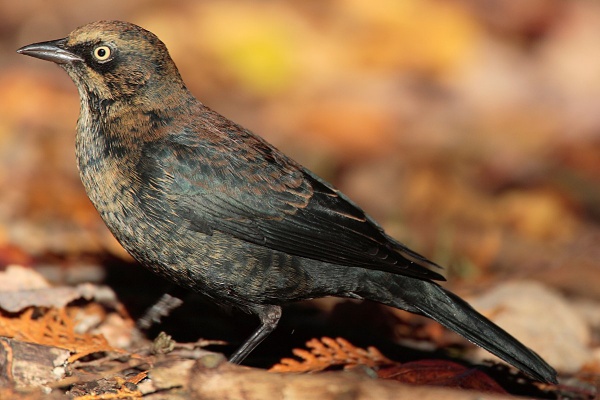Facts About Rusty blackbird
The rusty blackbird is a medium-sized bird, resembling grackles, that thrives in wet, forested environments. They breed in northern Canada and migrate to the United States for the winter. Unfortunately, their populations have plummeted significantly in recent years, and scientists are still striving to understand the reasons behind this decline.
These birds are distinguished by striking black feathers with green and purple iridescence, a pointed bill, and pale yellow eyes. They inhabit wet, temperate coniferous forests and muskeg regions in Canada and Alaska, typically nesting near ponds and wetlands. During winter, they migrate to the eastern and southeastern parts of the U.S.
Rusty blackbirds are adept foragers, often flipping leaves to find insects, small fish, and seeds. They also consume acorns and pecans and, though rarely, may prey on small birds. They begin nesting early for a boreal forest bird and take their time migrating in the fall, frequently gathering in large numbers in the lower Mississippi Valley during winter.
Regrettably, their population has experienced a steep decline due to habitat loss from development, mercury contamination, and even intentional poisoning. Citizen science projects have documented a sharp decrease in their numbers over the past four decades. This alarming trend has prompted organizations like the International Rusty Blackbird Working Group to intensify research and conservation efforts to save these intriguing birds.

 Canada
Canada